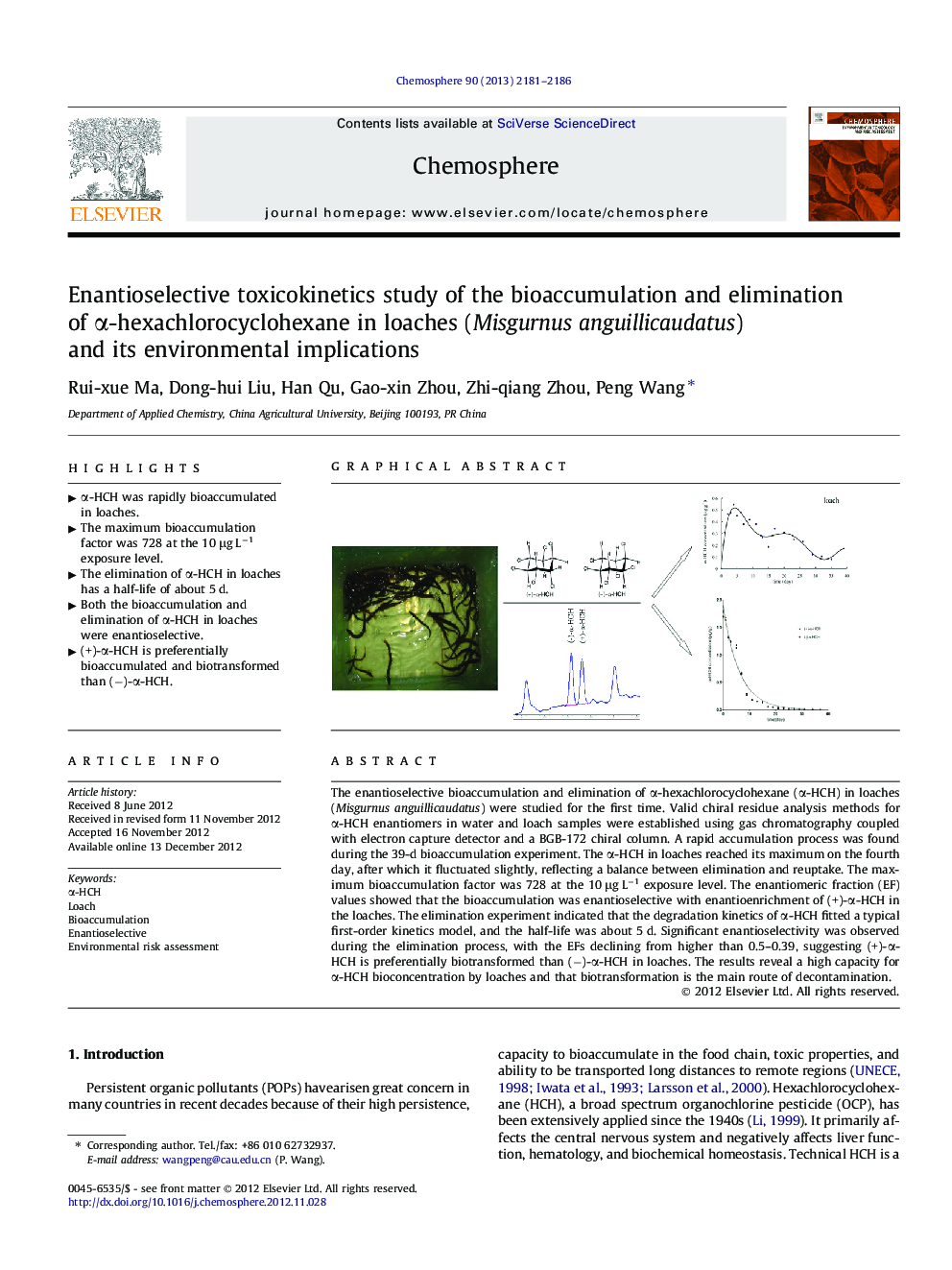| Article ID | Journal | Published Year | Pages | File Type |
|---|---|---|---|---|
| 4409589 | Chemosphere | 2013 | 6 Pages |
The enantioselective bioaccumulation and elimination of α-hexachlorocyclohexane (α-HCH) in loaches (Misgurnus anguillicaudatus) were studied for the first time. Valid chiral residue analysis methods for α-HCH enantiomers in water and loach samples were established using gas chromatography coupled with electron capture detector and a BGB-172 chiral column. A rapid accumulation process was found during the 39-d bioaccumulation experiment. The α-HCH in loaches reached its maximum on the fourth day, after which it fluctuated slightly, reflecting a balance between elimination and reuptake. The maximum bioaccumulation factor was 728 at the 10 μg L−1 exposure level. The enantiomeric fraction (EF) values showed that the bioaccumulation was enantioselective with enantioenrichment of (+)-α-HCH in the loaches. The elimination experiment indicated that the degradation kinetics of α-HCH fitted a typical first-order kinetics model, and the half-life was about 5 d. Significant enantioselectivity was observed during the elimination process, with the EFs declining from higher than 0.5–0.39, suggesting (+)-α-HCH is preferentially biotransformed than (−)-α-HCH in loaches. The results reveal a high capacity for α-HCH bioconcentration by loaches and that biotransformation is the main route of decontamination.
Graphical abstractFigure optionsDownload full-size imageDownload as PowerPoint slideHighlights► α-HCH was rapidly bioaccumulated in loaches. ► The maximum bioaccumulation factor was 728 at the 10 μg L−1 exposure level. ► The elimination of α-HCH in loaches has a half-life of about 5 d. ► Both the bioaccumulation and elimination of α-HCH in loaches were enantioselective. ► (+)-α-HCH is preferentially bioaccumulated and biotransformed than (−)-α-HCH.
